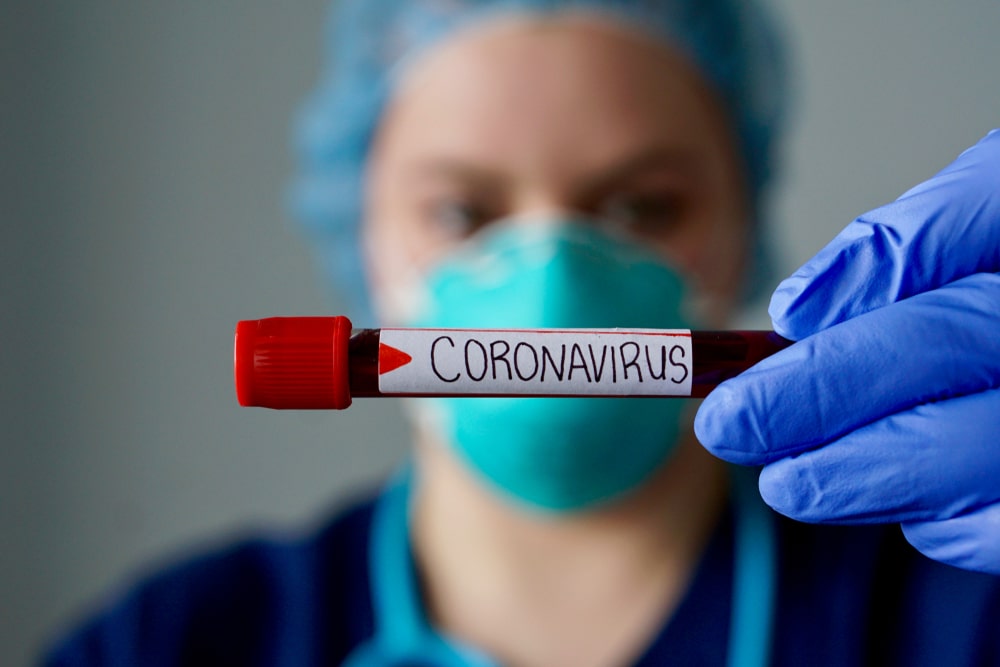Coronavirus Outbreak at Seattle Nursing Home Highlights Need for ‘Precautionary Tactics’

An outbreak of coronavirus at a Seattle nursing home is highlighting the need for facilities across the United States to use precautionary tactics. As the number of people sick with coronavirus increases in the U.S., officials are more concerned than ever about those most vulnerable to the illness. At Nursing Home Abuse Center, we will continue to share relevant information about coronavirus so our readers understand the risks and how to respond.
As always, if you have questions about nursing home care or resident rights, you can contact us directly.
Seattle Nursing Home Coronavirus Outbreak
According to a report in Kaiser Health News, four residents have died at Life Care Center of Kirkland, Washington. Several others have been hospitalized due to coronavirus. One healthcare worker at the facility was also hospitalized. At the time of the report, around 50 of the 288 residents and staff members were exhibiting possible signs of coronavirus (COVID-19) infection.
In response to the outbreak, the facility halted all visits from family members and volunteers, and stopped vendor deliveries. New admissions were also placed on hold. Executive Director, Ellie Basham, said,
“Current residents and associates are being monitored closely, and any with symptoms or who were potentially exposed are quarantined.”
The nursing home outbreak happened around the same time that a Washington man became the first U.S. patient to die from coronavirus. That death is not reportedly linked to the nursing home. Given both events, the Centers for Disease Control and Prevention (CDC) has dispatched a team to investigate the outbreak and the man’s death. The CDC team will try to determine the source of coronavirus in the area.
In the meantime, the Governor and the Washington State Department of Health are urging residents to wash their hands and monitor any symptoms closely. Anyone with symptoms of respiratory illness are asked to stay home. A state of emergency has been declared in order to open access to resources that can help the Seattle area prepare for the possibility of more illnesses.
Why Nursing Homes Need to Take Precautionary Measures
There are around 2.2 million people living in nursing homes across the U.S. Nursing home residents are more at risk for viral outbreaks like coronavirus because of the close living quarters and shared spaces.
The elderly and people who are immune-compromised are more likely to develop complications from coronavirus. People with chronic conditions like lung disease, heart disease or diabetes are more likely to experience a more severe illness. This is concerning for officials because many people who live in nursing homes are elderly and have chronic conditions.
People who are at risk for complications should talk to their healthcare provider about what they can do to reduce the risk of infection with coronavirus.
Nursing Home Recommendations
In an effort to prevent outbreaks or reduce the risk of spreading coronavirus, the American Health Care Association has provided updated guidelines for coronavirus.
The guidelines recommend the following strategies to reduce the risk of respiratory viruses spreading in nursing homes:
- Monitor staff and visitors to make sure they are properly washing their hands or using alcohol-based hand sanitizer.
- Review contact isolation procedures and ensure that all staff members are following these guidelines.
- Review plans for rearranging resident bed assignments to segregate patients who are sick from those who are not.
- Remind staff members, vendors and family members to stay home if they are sick.
- Provide family members with alternatives to regular visits, such as video calls or email.
- Keep in close contact with the state health department.
- Monitor the CDC’s COVID-19 website for updates on infections and outbreaks.
- Make sure that applicable staff members are aware of when and how they should test for coronavirus.
- Post preventative hygiene recommendations in public areas. These posts should include instructions on:
- Proper hand hygiene
- Use of alcohol-based hand sanitizer
- Covering a cough
- Staying home when sick (especially with a fever)
The CDC is still investigating exactly how coronavirus spreads. The virus can be spread through person-to-person contact and through contact with surfaces that contain the virus. How easily it spreads, how contagious it is and how it could impact communities is still under investigation.
What is Coronavirus?
Coronavirus, also called COVID-19, is a virus that causes respiratory disease. Coronavirus is a family of viruses that is common in many animals, including bats, cattle, cats and camels. It is rare for one of the viruses to infect people. COVID-19 is one of those rare occasions when a coronavirus infects people and causes widespread illness. Researchers believe that this massive outbreak of coronavirus is the result of an animal reservoir, most likely bats.
COVID-19 was first identified in Wuhan, China, and has since spread to 85 countries/territories. Currently, there are more than 95,000 illnesses worldwide. At least 3,000 people have died due to complications from the respiratory virus. In the U.S., the CDC reports 99 total cases and 10 deaths reported in 13 states.
The CDC reports that researchers do not fully understand the severity of COVID-19. Many people who have the virus experience relatively mild symptoms and recover without incident. Some people, however, develop a more serious illness. The CDC suggests that around 16 percent of patients experience more serious symptoms or complications. Most often, this is due to age and the presence of chronic medical conditions.
Symptoms of coronavirus usually develop 2 to 14 days after exposure. The most common symptoms of exposure are:
- Fever
- Cough
- Shortness of breath
If you have these symptoms and have recently traveled outside the U.S., talk to your healthcare provider. Also talk to your healthcare provider if a friend or family member has symptoms of coronavirus and may have been exposed. Your healthcare provider may decide to test you for coronavirus. If you do have the virus, you will most likely be quarantined in your home until you are well.
What You Should Know about Coronavirus
Separating people who are sick from those who are not is important to contain the virus and reduce the risk of spreading it further. The CDC recommends the following for anyone who may be sick with coronavirus or who have been exposed:
- Call your doctor before going into the office. If you think you have COVID-19, your doctor’s office will instruct you on how to avoid spreading it.
- Wear a facemask when you are around other people, including in your doctor’s office.
- Cover coughs and sneezes. Viruses can easily spread through bodily fluids.
- Wash your hands often, and use alcohol-based hand sanitizer in between washing.
- Do not share household items with your family members. This includes cups, utensils, towels, bedding or clothing.
- Clean all surfaces in your home that people touch regularly. Thoroughly clean all doorknobs, faucets, toilets, telephones, remotes, keyboards, countertops, chairs, and door pulls.
- The CDC notes that animals may also be able to carry and transmit the virus, so if you are sick, you should also limit your time around animals.
Most importantly, if you have symptoms consistent with coronavirus, monitor them closely. This is especially important if you live in a nursing home. Contact your doctor if your symptoms get worse, or if you develop new symptoms. Many people recover from coronavirus quickly and without complications. However, if you have certain underlying conditions, you could suffer a more severe illness or complications.
Sources:
- https://www.cdc.gov/coronavirus/2019-ncov/index.html
- https://www.latimes.com/world-nation/story/2020-02-29/coronavirus-death-seattle
- https://www.ahcancal.org/facility_operations/disaster_planning/Documents/COVID%2019%20-%20Update%202.pdf
- https://khn.org/news/nursing-home-outbreak-spotlights-coronavirus-risk-in-elder-care-facilities/
- https://www.cdc.gov/coronavirus/2019-ncov/about/steps-when-sick.html


